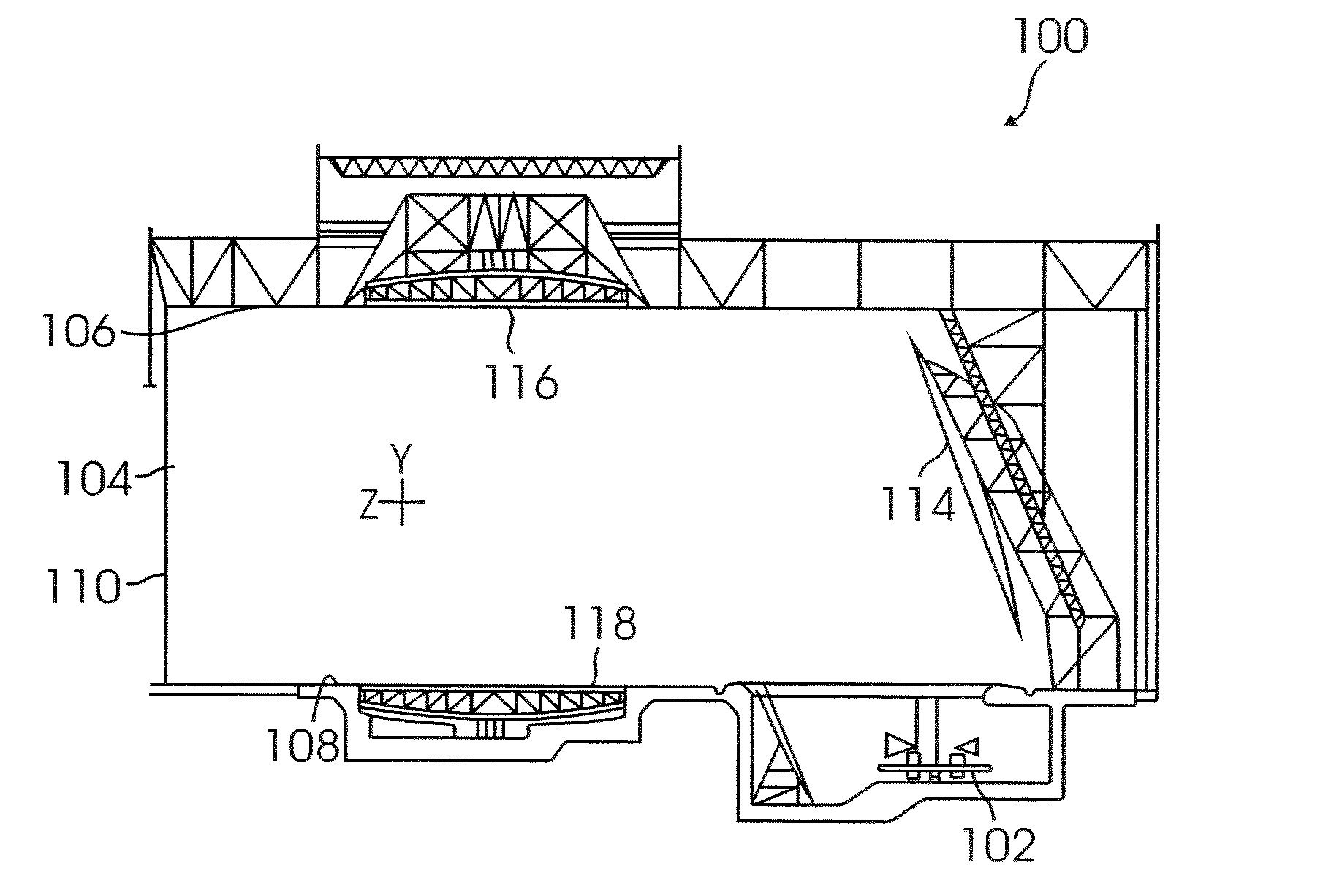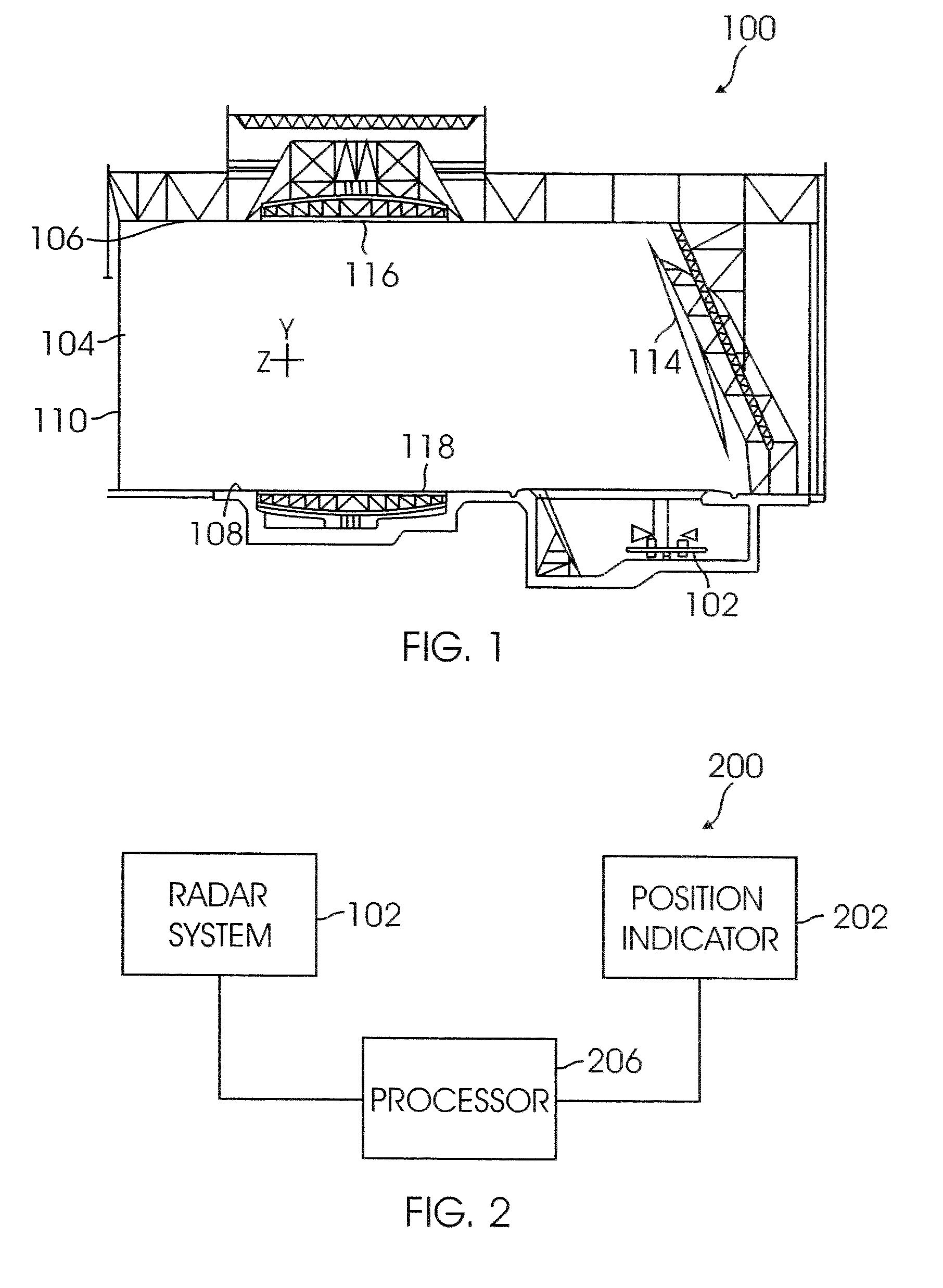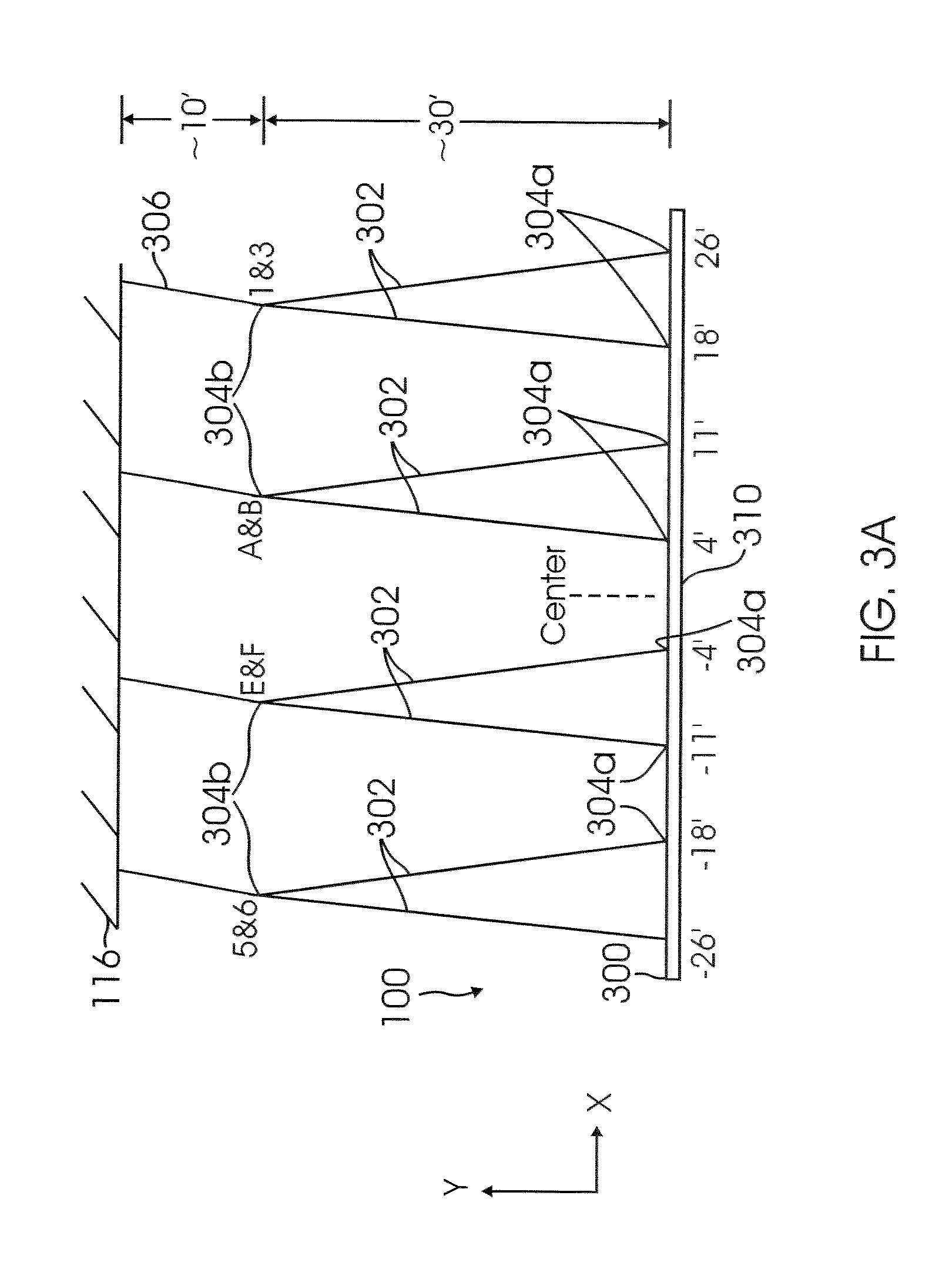Field probe from the angular response of a rigid body
a rigid body and field probe technology, applied in the field ofradar test ranges, can solve the problems of placing additional cost burdens on test programs and actual measurements remain unquantified
- Summary
- Abstract
- Description
- Claims
- Application Information
AI Technical Summary
Benefits of technology
Problems solved by technology
Method used
Image
Examples
example
[0043]In the following example, 1.74-inch diameter rod, made of galvanized thin-wall steel was used as rigid body 300. The rod measured 60 feet and was suspended in a horizontal plane from upper turntable (UTT) 116. When UTT 116 is rotated, the angle between rigid body 300 and the direction of arrival of the incident radar wave is changed, thereby varying radar response of rigid body 300. An example of the angular radar response in a test range is as shown in FIG. 5 for a frequency of 2.4 GHz and vertical transmit / vertical receive (VV) polarization. The angular radar response (echo) is charted in logarithmic scale in decibels-square meter (dBsm). FIG. 5 shows the typical azimuth dependence of the radar echoes at 2.4 GHz from the 60-foot long rod. Radar response (echo) is strongest within a narrow angular range. The independent variable is the UTT-angle, which within a small inclination (.+−.10.degree.) from the vertical plane normal to the incident wave direction, is linearly propor...
PUM
 Login to View More
Login to View More Abstract
Description
Claims
Application Information
 Login to View More
Login to View More - R&D
- Intellectual Property
- Life Sciences
- Materials
- Tech Scout
- Unparalleled Data Quality
- Higher Quality Content
- 60% Fewer Hallucinations
Browse by: Latest US Patents, China's latest patents, Technical Efficacy Thesaurus, Application Domain, Technology Topic, Popular Technical Reports.
© 2025 PatSnap. All rights reserved.Legal|Privacy policy|Modern Slavery Act Transparency Statement|Sitemap|About US| Contact US: help@patsnap.com



